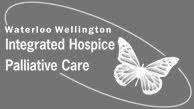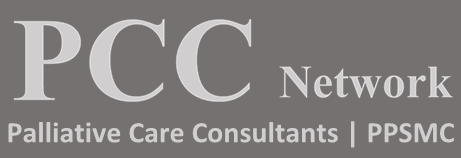Bowel Obstruction
Bowel obstruction occurs in up to 42% of malignancies and is a common complication in patients with colorectal and ovarian cancer but can occur with any cancer that has an abdominal or pelvic presence in advanced stages of disease. A bowel obstruction can occur from infiltration, intraluminal obstruction or external obstruction, due to tumor growth, adhesions, carcinomatosis, fecal impaction, pharmacotherapy or neuropathy, where the forward flow of gastric and intestinal contents through the GI tract is impaired. Obstructions can be partial or complete, reversible or non-reversible and occur most often (61%) in the large bowel versus 33% in the small bowel.1
Mechanical or Functional Obstruction? 2
-
- Mechanical is caused by a physical blockage
- Functional (paralytic or ileus) caused by a dysfunction of the bowel motility
Partial vs Complete Obstruction 2
In a partial or incomplete obstruction, stool and gas may still pass but in reduced amounts and nausea and vomiting is often present, whereas with a complete obstruction no stool or gas is passed
Early Bowel Obstruction: 1,2
Hyperactive bowel sounds: Occurs as the intestines try to push contents past the obstruction, intensity and frequency of bowel sounds can increase, this results in high-pitched, tinkling sounds on auscultation
Late Bowel Obstruction: 1,2
-
- Hypoactive or absent bowel sounds:The obstruction progresses, and paralysis of the intestinal tract starts, bowel sounds may become diminished or absent.
- Ileus: lack of bowel sounds can indicate a paralytic ileus, when the intestines temporarily stop moving
Assessment 1,2
- Complete assessment using OPQRSTU Tool
- Abdominal examination: inspection, auscultation, percussion and palpation. Assess for tenderness, organomegaly, and distension. The more abdominal distension present, the more distal the obstruction. Is abdominal pain present? Will usually present as severe colicky pain sharp and localized
- Absence of bowel sounds or high-pitched tinkling (usually from tension of air or fluid in a loop of dilated bowel suggests obstruction).
- Date of last bowel movement and consistency/ colour
- Is the patient passing gas?
- Is vomiting present? Assess frequency, amount and colour. Review of medications that may be contributing to symptom such as, opioids or anticholinergics which can cause physiological dysfunction of bowel
- Regular reassessment is essential for symptom control
What Emesis Can Tell Us 2,3
- The higher the obstruction the earlier and more vomiting will be present
- Undigested food, odorless, greenish bile-like emesis and no stool occurs when the proximal small bowel is involved but bowel movements can continue as a by product of cell debris and bacteria from the intestine
- If emesis contains semi-digested food eaten a day or two previously then this is suggestive of gastric outflow obstruction, especially if no bile present
- Feculent emesis is thick and foul-smelling, likely a more distal obstruction
- Coffee ground emesis appears dark, brown, or black, lumpy in texture, caused by partially digested blood and indicates bleeding in the upper GI tract
Treatment1,2
- Pharmacological treatment should always be parenteral and include
- Anti-secretory agents, Octreotide or Hyoscine Butylbromide, reduces gastrointestinal secretions, gut nerve transmission, and bowel wall edema and inhibits release of gastrin, cholecystokinin, vasoactive intestinal peptide and pancreatic enzymes
- Steroids for inflammation – Dexamethasone subcut. Discontinue if the patient does not respond to treatment within 4 to 5 days- mechanism of action unclear, may help to decrease edema around intramural mass
- Antiemetics for nausea -Haldol, methotrimeprazine
- Motility agents – Metoclopramide (Maxeran) – stimulates the bowel in partial or incomplete obstruction but is contraindicated in complete bowel obstruction
- Anti-motility agents – Hyoscine Butylbromide useful with severe colic pain
- Analgesics for pain should be given and should not be avoided fearing worsening the obstruction
- Non-pharmacological treatment
- NPO (may be able to give small snacks for patients with controlled nausea and vomiting)
- Good mouth care
- Ice chips for dry mouth
- Nasogastric (NG) tubes may be used to remove gastric content, referred to as gastric decompression where the stomach is drained by gravity or by connection to a suction machine to prevent nausea, vomiting, gastric distension,
- Nasal care for patients with nasogastric tube in place
- Is the patient a candidate for venting PEG tube or surgery?
- IV or subcutaneous hypodermoclysis fluids for hydration, only consider when the dehydration causes agitation, confusion or in renal failure where opioid metabolites accumulate, and myoclonus or seizures are present
- If the Obstruction resolves
- D/C octreotide and steroids (may need to taper)
- Reinstate bowel regimen
- Reorder an antiemetic with prokinetic effect like Metoclopramide or Domperidone
- Change meds back to oral route
- Slowly increase food and fluid intake PO, first fluid and then soft diet to full die
Resources
- BC Centre for Palliative Care (2017). C. interprofessional palliative symptom management guidelines. Malignant bowel obstruction.
- Pallium Canada. (2020). Pallium palliative pocketbook: Gastrointestinal problems (Second edition, pp.8-20- to 8-29).
- Catena, F., De Simone, B., Coccolini, F., Di Saverio, S., Sartelli, M., & Ansaloni, L. (2019). Bowel obstruction: a narrative review for all physicians. World journal of emergency surgery: WJES, 14, 20.
Download Tip of the Month
PDF – Bowel Obstruction




